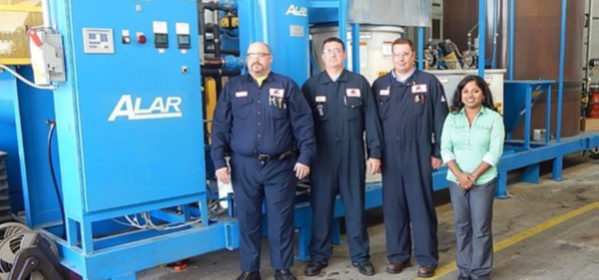Water
As water quality and availability continue to be of increasing importance to our stakeholders, including to our employees and communities in which we operate, we feel it is our responsibility to continually evaluate and optimize our water use. As we continue to expand our operating footprint, we know we must carefully manage our water resources in our global operations through conservation and reuse.
In 2015, our global manufacturing facilities withdrew slightly more than 1.6 million cubic meters of water from all sources, an increase from 2013. The increase was due to a variety of factors including additional sites having been added to the reporting base. Improved data collection methods also identified water use that may have been underreported in our first sustainability report. However, since 2013 we have seen a 4 percent reduction in our water usage intensity.
Water Consumption

Water Use Intensity

Axalta has invested in on-site wastewater treatment facilities for several operational sites in an effort to reduce effluents and waste during manufacturing. These facilities treat their own effluents inside the plant where they were created, rather than ship to an external party, resulting in a range of environmental and operational improvements. The treated water is then sent back into our manufacturing operations, eliminating the need to withdraw municipal drinking water for operational use.
-

Wastewater Reduction at Mt. Clemens
The Mt. Clemens facility in Michigan faced significant costs from the disposal of approximately 6.1 million pounds of non-hazardous waste that was generated on site annually, which was collected and then shipped off site. We proposed to construct a wastewater treatment system that would reduce the cost of disposing non-hazardous waste and reduce the number of off-site shipments.
The wastewater treatment utilized a two-step filtration system. The first step chemically treats the non-hazardous waste, allowing for solids to coagulate and flocculate. The second step filters the clean effluent streams through a carbon column filter. The solids are collected and sent off site for safe disposal. A 2,200-gallon batch of wastewater is processed in a total of four to five hours with minimal operator involvement.
The wastewater treatment plant provides an internal rate of return of 78 percent as a result of the reduced cost due to off-site disposal of non-hazardous chemicals. Additionally, the treatment unit will decrease the number of shipments sent off site by approximately 120 per year. The new wastewater treatment technology and reduction of third-party transportation related CO2 emissions will continue to contribute to Mt. Clemens achieving the site’s sustainability goals.
Photo caption: Mt. Clemens wastewater reduction team